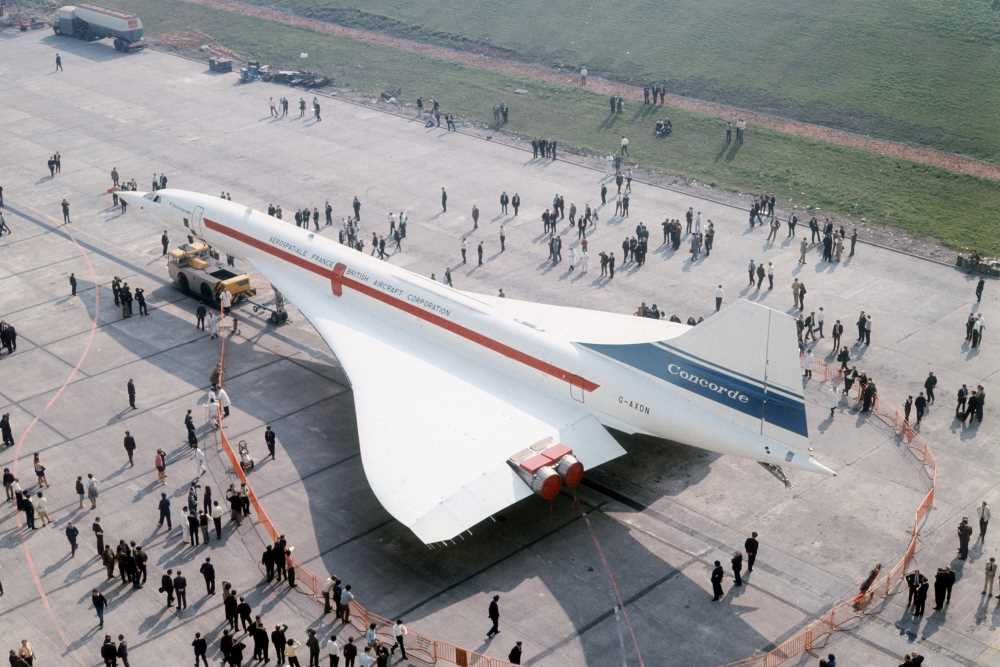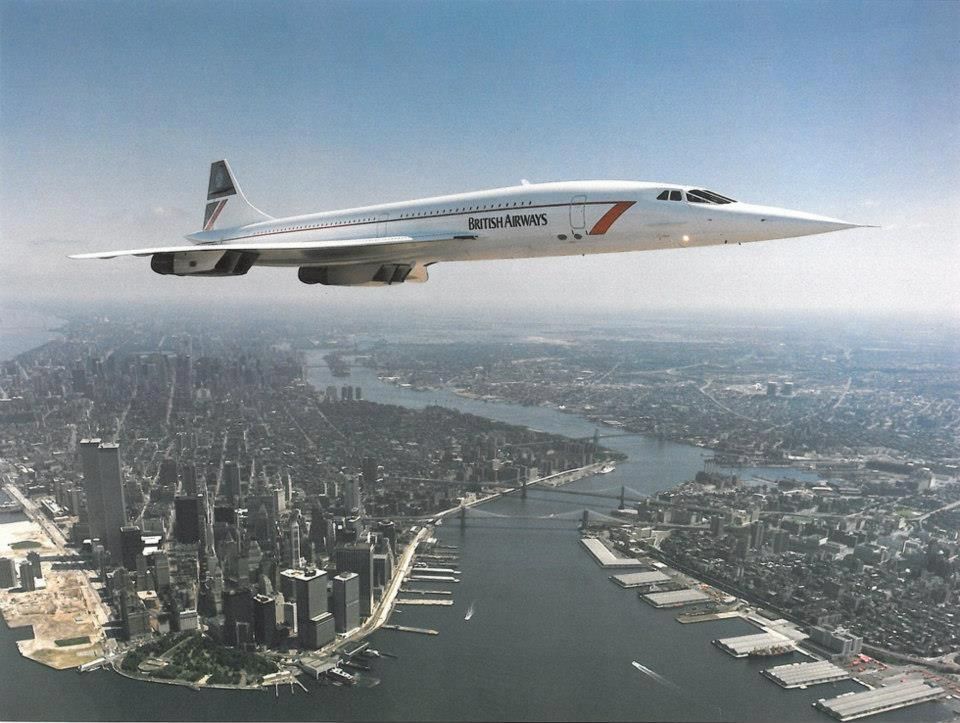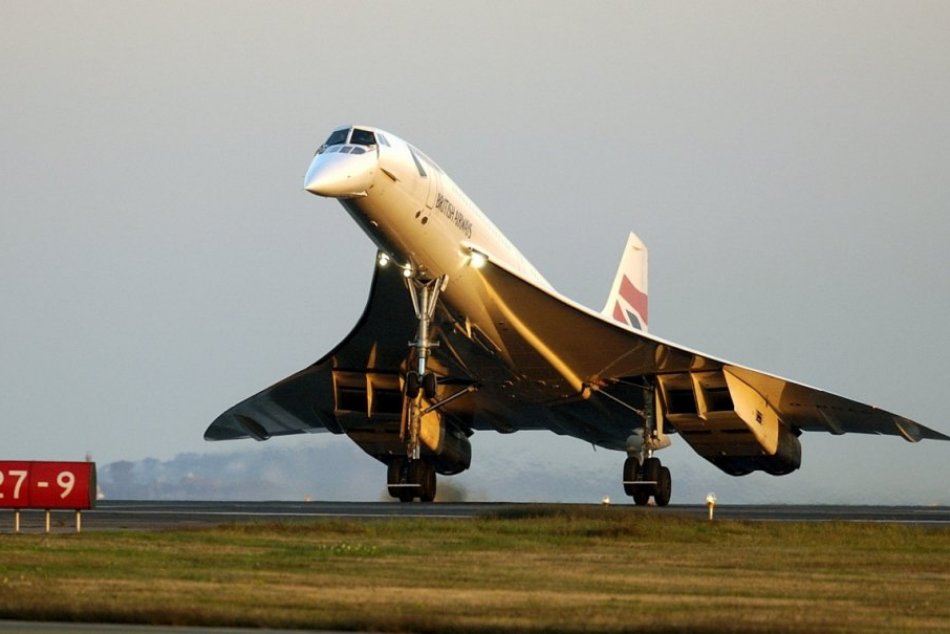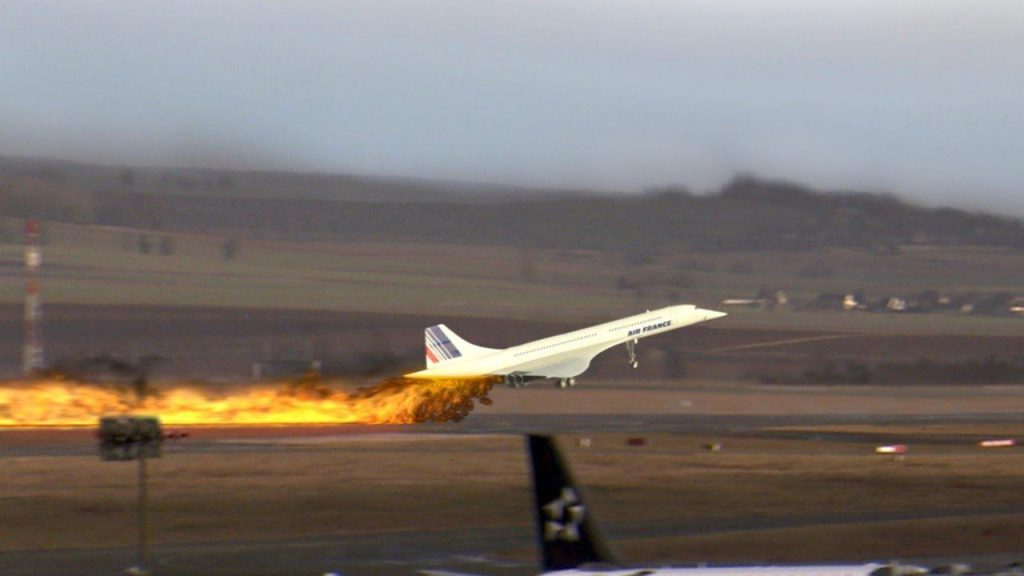Supersonic Concorde was the third-fastest passenger plane in the world. But its fate went fatal due to an accident on the runway that killed all of its passengers along with its career. Today we are going to talk about the Concord which could fly 2180/km per hour.
One day in January 45 years ago, 250 million viewers stuck to their TV screens to witness the history of aviation. At that time A Concorde from British Airways and one from Air France took off simultaneously from London and Paris. For the first time, the supersonic passenger planes were to carry paying passengers at twice the speed of sound.
The trips went from London to Bahrain and Paris-Rio with a stopover in Dakar. Though that was not the longest route with the largest passenger base, it had to. Because the United States had previously closed the airspace to Concorde due to protests from angry activists who feared environmental damage and noise from supersonic booms.
The creation of the first supersonic flight routes marked the beginning of a new era for aviation. And it would mean a lot of prestige for the two airlines. Though finally, Concord got its daily routes to New York and Washington. But Concorde was barely profitable. And passengers flying at supersonic speeds became a dead-end after 27 years of its start. Can you believe that today, the trip across the North Atlantic takes twice as long as it was possible to travel a generation ago?
Supersonic Concord Arrived before it started
BA 001 was the name of the daily morning flight from London to New York. It left Heathrow at 1030 and landed in New York 0925, one hour and five minutes before the departure time due to the time difference. This was possible due to the plane’s speed on Mach 2 (2160 km / h), which reduced the travel time to 3.5 hours from eight hours.
For the passengers, the speed was a silky-smooth experience that never made ripples in the well-filled champagne glasses. The only experience of supersonic speed was the digital display on the wall at the front of the cabin that showed the Mach number.

Supersonic Concord Hang in A Vacuum
The cruising altitude was also double that of its traditional passenger aircraft. In particular, it was somewhere between 57-60,000 feet. And the altitude was enough to see the black sky and the curvature of the earth through the small windows.
In front of the cockpit, you also had to look at the instruments to form an impression of speed. Although the supersonic speed created a noticeable bang at ground level, it was quiet on board. The only unusual indication was that the altimeter quickly spanned a couple of laps as the pressure wave moved forward along the fuselage as the plane passed the sound barrier.
Otherwise, it was like hanging almost still in a large vacuum, said Concorde pilot Brian Calvert. Brian was the man who facilitated the introduction of Concorde in British Airways.
He also described that at a speed of 600 meters per second high above the busy North Atlantic routes, you could look down on the usually scheduled flights 5000 meters below you. Due to the speed difference, it seemed like they were flying backwards when you caught them again.
An Advanced Design Ahead of Its Time
The maiden voyage to Concorde 001 had already taken place seven years earlier, in 1969. And it was the first of a total of 20 aircraft. In a way, this was the British / French lunar landing, because in commercial aviation nothing like this had ever been developed. Not even military aircraft of similar size had managed to fly faster than Mach 1.5.
The Concorde fascinated many, and when the plane landed in any country, it was a big event for aviation enthusiasts. According to many aviation enthusiasts, it was probably the look that is particularly fascinating. It was the definition of speed. Also, there were many fascinating details around the plane that made it so special. The four Rolls-Royce engines are fantastic.

The Fatal Fate of Supersonic Concord
The speed that the Concorde gains, it needed the precision in the construction reminiscent of a Swiss watch workshop. In addition, the aircraft was mainly based on untested technology with challenges ahead.
The most effective wing was very intricate with a double delta design and slightly curved seen from the front. As the delta wing did not allow landing flaps, it was the air vortices over the wings, which were produced by means of a high angle of attack, that prevented the aircraft from stepping at lower speeds during take-off and landing.
Besides, the angle of attack in turn required a variable angle on the nose, which had to be angled 12.5 degrees downwards when landing for the pilots to see enough.
Nevertheless, it requires a take-off speed of almost 400 km / h to get into the air. And it proved very fatal during the take-off in Paris, 25 July 2000.
It Flew Hot
At high speeds, the actual frictional heat in the hull was high enough to deform ordinary aluminium. But for Concord, an alloy called duralumin was developed, though it was still the temperature that limited the top speed when the fly nose reached 127 degrees in Mach 2.
Passengers could actually feel the heat from the outer hull which routinely reached almost 95 degrees. A funny effect was that the heat also lengthened the hull by 30 centimetres, which placed great demands on the hull structure.

A Huge Costs That Killed Its Career
A total of 200,000 people worked mostly on the development of the Concorde. Therefore, The United Kingdom had to solve the issue by working with France to share costs and resources. The components were manufactured in both countries, transported around, and finally assembled on separate production lines. The British built by inch standard, the French metric. Incredibly, they fit into each other, but the costs were astronomical.
Compared to the original budget, the price tag was 20 times greater than along the way. If we convert it to the current value, it will stand at $13.5 billion in 2022. And it is all distributed among the two countries’ taxpayers. Had all the airlines that originally showed interest actually bought the planes, it might have been profitable.
But the timing of the launch was lousy. In addition, came the oil crisis. On the other hand, protests from environmental movements gave the project another shock. Eventually, concern about the impact on the ozone layer, the fear of supersonic bangs, and broken windows caused a ban on flying supersonically over land. So, the ban suddenly limited its usefulness drastically.
When the bookings failed, British Airways and Air France each received seven planes for one lick and nothing. They ended up as national treasures on the US routes, in addition to seasonal routes and charter operations.
Still Futuristic In 2022
Limited passenger demand and tight profit margins were already a threat to the supersonic Concorde when the Paris accident occurred in 2000. After a one-year flight ban, the planes had barely returned to their wings when 9/11 hit aviation with full force.
At the same time, Concorde began to age and needed a full upgrade with modern guts to continue his career. But the fatal blow came in 2003 when Airbus declared that they would no longer produce spare parts.
Paradoxically, Concorde is as futuristic today as it was during the maiden voyage over 50 years ago.

A Small Metal Ended Supersonic Concorde on the Runway
On July 25, 2000, Air France Flight 4590 took off with a supersonic Concorde from Charles de Gaulle Airport in Paris for New York. A German travel company had chartered the plane, and in New York, the cruise ship “MS Deutschland” was waiting for the passengers. But the 100 passengers should never experience that the supersonic plane broke the sound barrier. Already on the runway, it went wrong.
McDonnell Douglas DC-10, a Continental aircraft that took off four minutes before the supersonic Concorde left a piece of metal on the runway.
The piece was only 50 centimetres long and three centimetres wide. But it punctured tire number 2 on the left side of the Concorde. The plane could withstand a puncture, but it caused extreme bad luck. The tire, of about 4.5 kilos, rushed towards the underside of the wing at a speed estimated at around 500 km / h.
The force was so great that a pressure wave occurred which caused fuel tank number 5 to burst at the weakest point, just above the rear landing wheels. Fuel that leaked out was ignited by sparks from either the wheel well or cables that were torn up by the piece of rubber.
As the plane took off from the runway, at a speed of 300 km / h, a fireball protruded from one wing. The pilots were turned off by engine 2, which was on fire but chose to continue the takeoff. The plan was to get in the air, turn around, and then make an emergency landing at Le Bourget airport.
But unfortunately, the supersonic Concorde could not make it. The accident left all its passengers killed in a few minutes and the rest is history.
